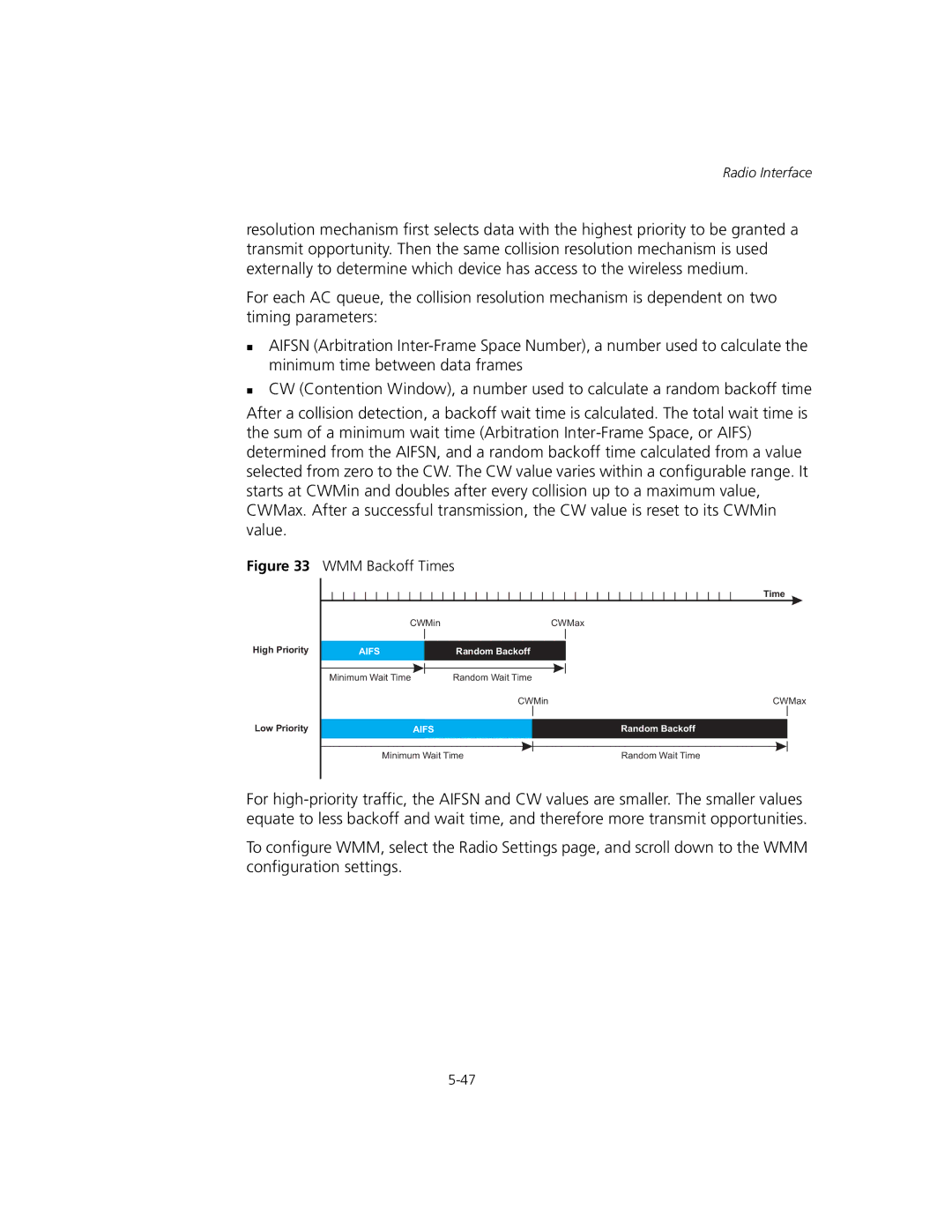
Radio Interface
resolution mechanism first selects data with the highest priority to be granted a transmit opportunity. Then the same collision resolution mechanism is used externally to determine which device has access to the wireless medium.
For each AC queue, the collision resolution mechanism is dependent on two timing parameters:
AIFSN (Arbitration
CW (Contention Window), a number used to calculate a random backoff time
After a collision detection, a backoff wait time is calculated. The total wait time is the sum of a minimum wait time (Arbitration
Figure 33
High Priority
Low Priority
WMM Backoff Times
|
| Time |
CWMin |
| CWMax |
AIFS | Random Backoff |
|
Minimum Wait Time | Random Wait Time |
|
| CWMin | CWMax |
AIFS |
| Random Backoff |
Minimum Wait Time | Random Wait Time | |
For
To configure WMM, select the Radio Settings page, and scroll down to the WMM configuration settings.
